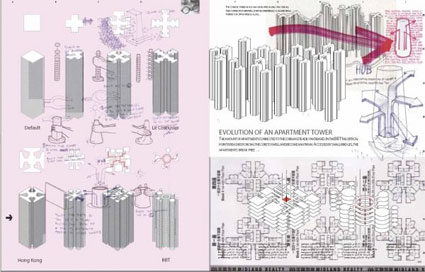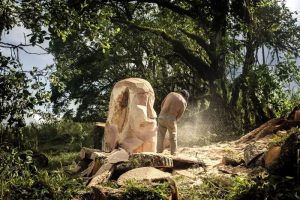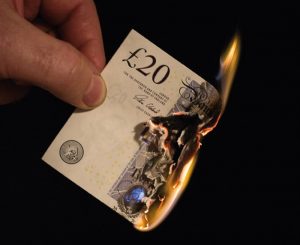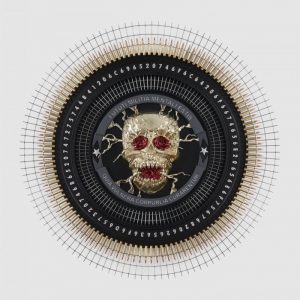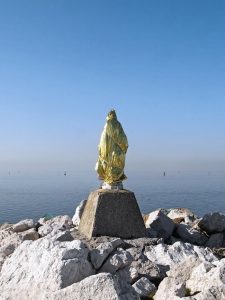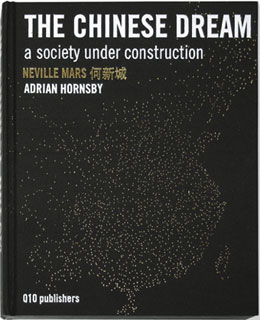 The Chinese Dream – A society under construction, by DCF, Neville Mars and Adrian Hornsby.
The Chinese Dream – A society under construction, by DCF, Neville Mars and Adrian Hornsby.
Publisher 010 says: What if you built the whole mass of western europe in 20 years? What if 400 million farmers then moved in? What would it look like? How would it work? Would you be able to go to sleep at night? And if you did, would you dream of somewhere else …?
China is in the midst of breakneck transformation. The last 30 years of astonishing economic growth and political and cultural reform have been driven by the world’s biggest ever urban boom. The new China is now halfway built. Within the next 30 years China will most likely take centre-stage as a global superpower, with hundreds of millions of new urbanites flooding into the rapidly swelling cities. But this process – presenting no less than the construction of a new society – is taking place almost without time to think.
Taking as its starting point the goal announced in China in 2001 to build 400 new cities of 1 million inhabitants each by 2020, or 20 new cities a year for 20 years, the book explores the hopes and hazards of dreaming on such a scale. The question being asked is in fact no less than how to build a new utopia. But is China mortgaging its present for a promised future, and doing so at the same time that current speeds of construction eclipse any real forward planning?
Partly because of the Olympics, publishing houses have been releasing books about China by the dozens, with massive and super fast urbanization appearing to be the most popular subject by far. And who could blame the public for being so fascinated by back covers that repeat again and again figures and facts such as:
‘China is the fourth largest economy in the world. If current growth rate continue, China will outsize the U.S. in the next 20 to 30 years’
‘China has the world’s fastest urbanization. 930,000,000 Chinese will be living in cities before 2030. This means one new Beijing every year for 35 years.’
‘By 2020 China’s national network of expressways will exceed in length even the American interstate highway system.’
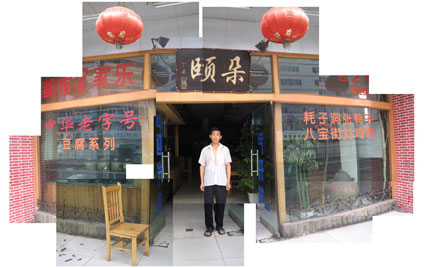 Photo-collage by Martijn De Waal. Bigger version online and inside the book
Photo-collage by Martijn De Waal. Bigger version online and inside the book
Some of these publications are genuinely well-researched and carefully written, others feel more like a quick and opportunist job. If you have to get your hand on just one book about urban China, make it this one. It is the result of several years of works by experts who were called to reflect on possible scenarios for urbanization in China in 2020. It is also great ‘value for money’, not just because the price is surprisingly affordable for a book that counts 700 pages but because once you open it you realize that it’s almost a work of art. The typo, graphic design, the photos, the layout, the graphics, every page has been meticulously crafted. And i have photos to prove my claim:
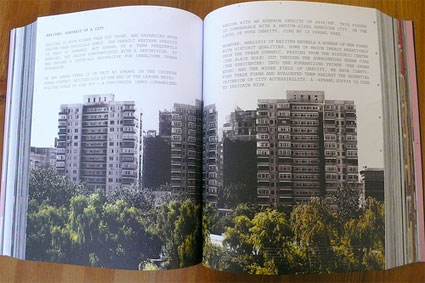
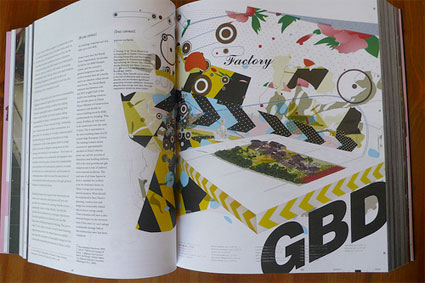
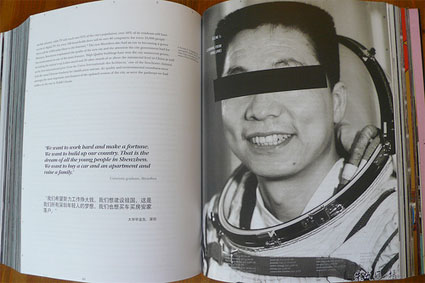
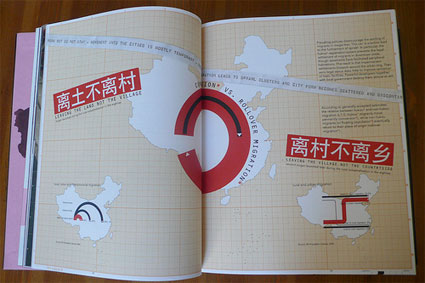
The urban (near) future of China is analyzed under every angle: economics, society, ecology, energy, architecture, urban planning and politics.
Some books about similar subject shun from any mention of China’s political situation. This one doesn’t. It’s not exactly heavy on politics but its authors recognize that, while ‘it’s urbanization not democracy that constitutes the main driver for change in China’, it would be naive to try and draw a clear picture of Chinese cities without taking the CCP (Chinese Communist Party) factor into account.
More importantly, the books holds a mirror to our ‘Western societies”. We’ve arrived at a crossroad where we are forced to stop and look with horror at the shortcomings of the capitalist model, a model that China is embracing fast, steady and avidly. The more i read about China’s frenzy and excesses the more i was remembered of ours. Of course there are many differences: we know of the ‘American dream’ but how much exactly do we know of the ‘Chinese dream’? We might have often read that one of the main goals of China is to create a broad middle class which will, of course, form the least saturated market we can dream of, but are we sure that the Chinese will blindly follow the same models of capitalism as we do? For example will they be willing to embrace our ‘credit-addiction’ and other eco-suicidal habits?
I almost forgot to mention my favourite part of the book: the ‘Glossary / From Lipstick to Skyscraper’. Some of the words and expressions relate to urbanization all over the world (archi-scrabble, anyone?). Some are peculiar to China: Chinese immobility, Chinese Moderni$m, Chengdu 1.5, dormitory extrusion, floating village, panda-hugger, Shanghai fever, chiburb, etc.
If 700 pages are not enough, head to BURB.TV, the collaborative research wiki that updates and expands into the larger knowledge of The Chinese Dream. Each article is a topical blog or BURB into which texts, images, and discussion are submitted. The research is produced with visionaries, architects, planners and social scientists invited by the Dynamic City Foundation.
Related: Book Review – The Concrete Dragon: China’s Urban Revolution and What It Means for the World.
Global Cities at Tate Modern.
The Chinese Far West, Get It Louder (Part 1, China), China China China China !!! Chinese contemporary art beyond the global market, Neural magazine special China, China Now at the Cobra Museum, Beijing’s “hutong” destruction, 798 art district in Beijing + The 798 art district, take two.

